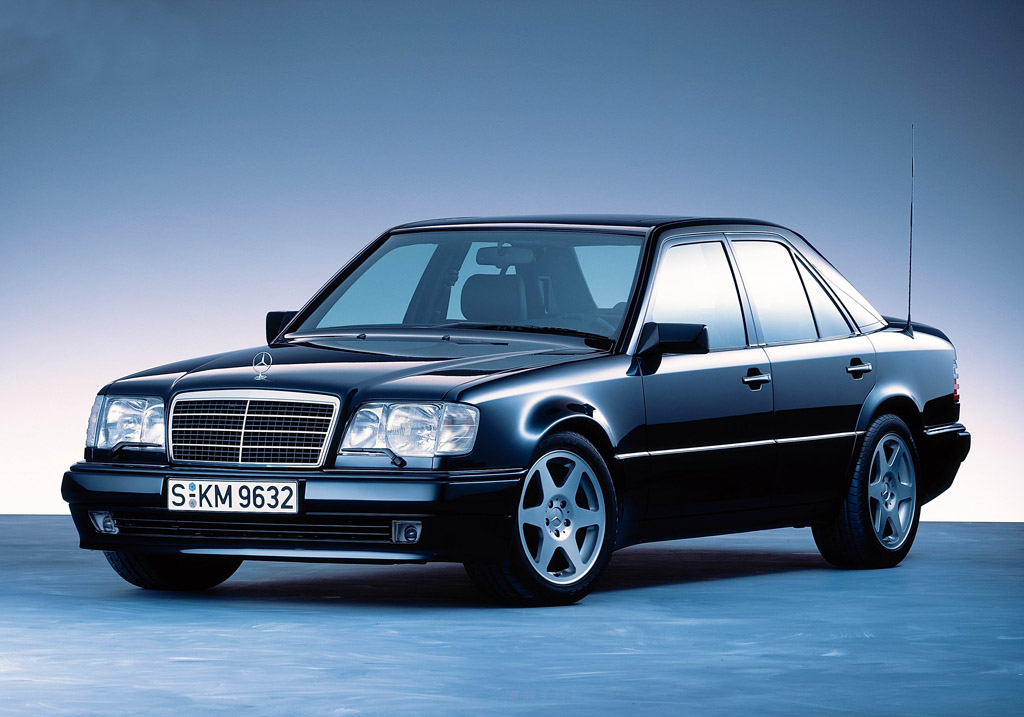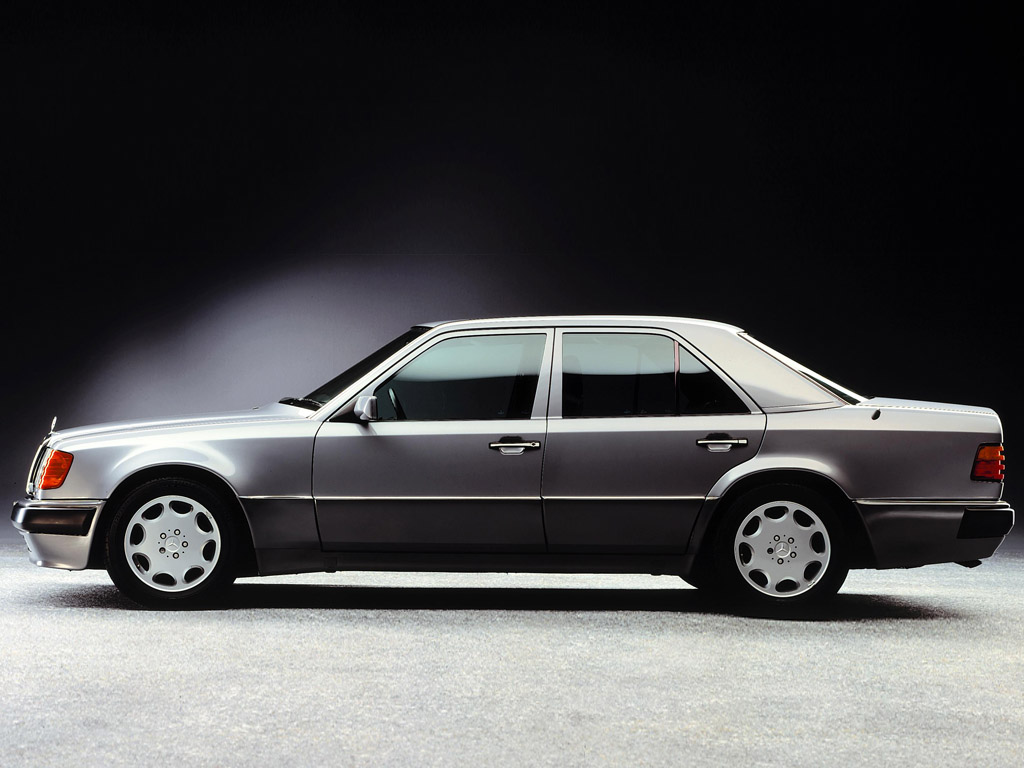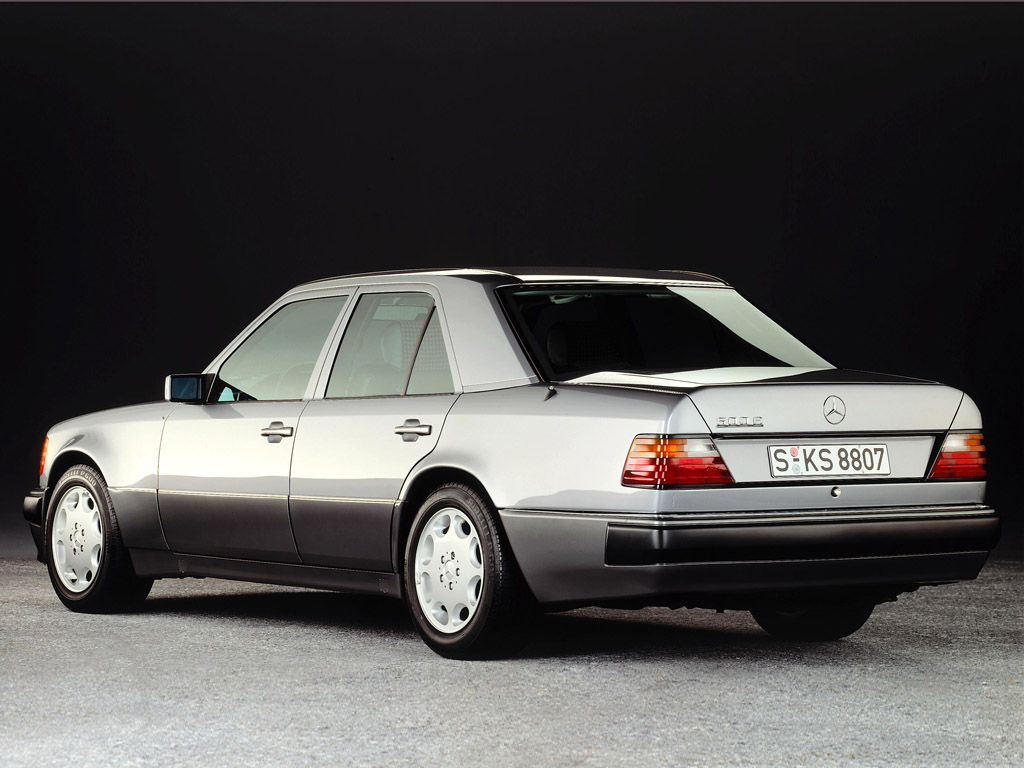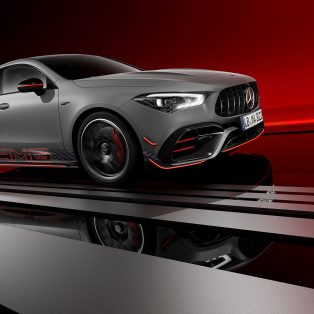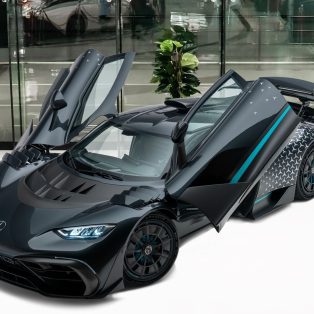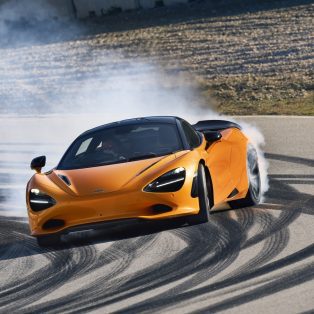1991 Mercedes-Benz 500 E
Presented at the Paris Motor Show in 1990: Apart from its somewhat bulging fenders, slightly lowered suspension and modified front apron with integrated fog lights, the car was externally identical with the successful W 124 mid-series models. That bodywork served as sheep’s clothing for hiding the wolf underneath: the engine compartment of the 500 E housed a V8 unit with a displacement of five liters, developing 326 hp (240 kW) and awe-inspiring performance when requested. The car accelerated from standstill to 100 km/h in 6.1 seconds, and its top speed was electronically limited to 250 km/h. Here was the new top-of-the-line model of the W 124 series.
Its inconspicuous appearance was the 500 E’s trump card. Some owners enjoyed the power reserves of the modestly clad car without traveling at high speed at all times. Others welcomed the car’s superior handling at high speeds – and derived great gratification from outpacing many a sports car.
The powertrain consisting of engine and four-speed automatic transmission had been taken from the 500 SL. In the 500 E, however, several new features were incorporated, including for the first time the so-called standard-deck engine – one and the same crankcase used for both the 4.2-liter and five-liter engines. As a result, the five-liter engine was 16.5 millimeters lower. Shorter connecting rods ensured that the bore-stroke ratio was retained. In addition, in the 500 E the Bosch injection system with electronic control and air-mass sensor (LH-Jetronic) replaced the previously used mechanical/electronic CIS-E injection. In October 1992, engine output was lowered slightly to 320 hp (235 kW) to reduce pollutant emissions. Compared to the 500 SL, the 500 E had a shorter axle ratio (1:2.82) – benefiting acceleration but also raising fuel consumption slightly. This sort of refined engineering and performance had its price: the first 500 E carried a price tag of DM 134,520 – more than twice as high as that of a 300 E which was not exactly unspectacular in its turn.
Incidentally, the 500 E was created in close cooperation with Porsche. The sports car manufacturer had joined the team in the early stages of development to make its expertise available in elaborating the concept of a sedan with the performance of a sports car. Production was subsequently distributed. The bodies-in-white were painted at the Mercedes-Benz plant in Sindelfingen, and final assembly became the responsibility of Porsche in Stuttgart-Zuffenhausen. There were two reasons for this. First of all, the production order was a timely stroke of good fortune when the sports car manufacturer experienced a somewhat difficult time in the early 1990s. And secondly, the relatively small volume was an ideal match for the production processes at Porsche, meaning that production of the 500 E could not have been in better hands.
The powerful sedan also benefited from the last model refinement of the W 124 series. The first modification related to the name. The mid-series was renamed E-Class, and the letters now preceded the figures, converting the 500 E into the E 500. The form language for the exterior design was modernized – one of the features being the radiator grill which from then on was surrounded by, and integrated in, the engine hood. Trunk lid and both fenders were given edges with larger radii, and the area around the number plate was also modified.
Production of the E 500 was discontinued in April 1995. The successor to the 124 series – the 210 series – was introduced in June 1995. Including the E 60 AMG, a total of 10,479 power sedans had been built.
In Detail
| submitted by | Richard Owen |
| price $ | $ $79 200 usd |
| engine | M119 V8 |
| position | Front Longitudinal |
| aspiration | Natural |
| valvetrain | DOHC 4 Valves / Cyl |
| fuel feed | Fuel Injection |
| displacement | 4973 cc / 303.5 in³ |
| bore | 96.5 mm / 3.79 in |
| stroke | 85.0 mm / 3.35 in |
| compression | 10.0:1 |
| power | 240.1 kw / 322.0 bhp @ 5700 rpm |
| specific output | 64.75 bhp per litre |
| bhp/weight | bhp per tonne |
| torque | 479.9 nm / 354.0 ft lbs @ 3900 rpm |
| body / frame | Unit Steel |
| driven wheels | RWD |
| front tires | F 225/55ZR-16 |
| rear tires | R 225/55ZR-16 |
| front brakes | SL500 Discs |
| f brake size | x 300 mm / x 11.8 in |
| rear brakes | SL500 Discs |
| r brake size | x 300 mm / x 11.8 in |
| curb weight | 1749 kg / 3855 lbs |
| wheelbase | 2799 mm / 110.2 in |
| length | 4740 mm / 186.6 in |
| width | 1880 mm / 74.0 in |
| height | 1422 mm / 55.9 in |
| transmission | 4-Speed Auto |
| gear ratios | :1 |
| final drive | 2.82:1 |
| top speed | ~249.4 kph / 155.0 mph |
| 0 – 60 mph | ~5.7 seconds |
| 0 – 1/4 mile | ~14.5 seconds |





